Although this paper is not published by GWCT scientists and does not represent the views of the GWCT, this summary has been produced for our members, and the wider public, to increase the accessibility of the scientific literature. It is important to remember that each individual paper should not be thought of alone, but considered in the context of the wider evidence available in that area.
Key points
Background
- Populations of many bird species have declined in recent decades.
- Predator numbers are thought to have risen over a similar period.
- This paper investigates whether higher predation plays a part in declining bird populations, by analysing many scientific studies across Europe, focusing particularly on studies from the UK.
Findings of the study
- It finds that the UK has high numbers of foxes and carrion crows compared to other European countries, and that these have risen in recent decades.
- The analysis finds good evidence that predation is having an effect on ground-nesting seabirds, waders and gamebirds.
- But the paper does not find strong evidence that predation is limiting pigeons, birds of prey, woodpeckers and songbirds.
- The predators which do limit bird populations are usually generalist predators such as foxes and crows, or introduced, non-native predators such as American mink.
Conclusions
- Predator management has a short-term role in protecting some bird populations, but long-term approaches should be developed to address the underlying causes of high predation rates.
Background
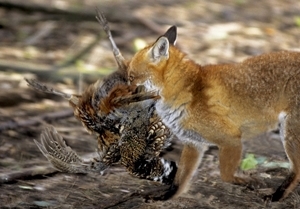 The populations of many bird species have declined in Europe and North America. This is thought to be for many reasons, including the intensification of agriculture as well as forestry practices. However, predator populations have also increased, and there are concerns that more predators may have contributed to falling bird numbers.
The populations of many bird species have declined in Europe and North America. This is thought to be for many reasons, including the intensification of agriculture as well as forestry practices. However, predator populations have also increased, and there are concerns that more predators may have contributed to falling bird numbers.
There are several possible explanations for higher predator numbers, many of which are human-driven. For example, the increase in available food from human activities and changes in land use that make the landscape more suitable for predators. Furthermore, the lack of top predators (such as wolf and lynx), which when they were present may have kept the the number of middle predators (such as fox and badger) down, could allow those numbers to rise.
A high number of predators does not necessarily mean high predation, or indeed an impact on prey populations. Different species can have different effects, in different areas, and removing one species may not actually reduce predation because predation by other species may go up. Interactions between predator species can also have an effect on overall predation for prey species. Like many biological systems, there is a complex web of interactions, and the overall effect of predators on prey species can be very difficult to assess.
There is an active debate about the control of predators, particularly in the UK where gamebird management is widespread and more intensive than in many other countries. Some believe predation control should be routinely used for gamebird management and conservation, and others believe it should be a last resort. Many studies have been carried out looking into the various aspects of predation and its management in the UK, and this paper brings these together to look at the overall picture.
What they did
The authors reviewed the scientific literature and data from other sources, for example, surveys of mammals and breeding birds, to answer four main questions about predation:
- Is the density of foxes and corvids (the crow family) higher in the UK than the rest of Europe?
- Have predator numbers increased in the UK?
- Are the populations of groups of birds suppressed by predation in the UK, meaning that their numbers are lower as a result? If so, by which predator species, and at which stage in their life cycle?
- Are there shared characteristics that these birds have which may make them particularly vulnerable to predation?
The approach used in this analysis only looked at studies that separated birds into individual species and did not include those that examined the effect on a community or group of bird species. This is simpler but does exclude some useful information.
This paper looked at the result for each species as a “case” on its own (the unit for analysis), rather than looking at the whole paper or study as a case – meaning that a study which collected data on 20 bird species would be represented 20 times in the analysis, whereas a study that looked at one species in great detail would only be represented once. This can give more weight to some studies compared to others, and although the authors account for it in their formal statistical analysis to try to avoid undue bias, the simple tables presenting the number of positive or negative findings do retain this effect. There are many ways of approaching this kind of investigation, all of which have their strengths and weaknesses as there is no perfect approach, but it is important to remember these constraints when considering the results.
Each study was assessed and given a score of scientific quality: fair, good or best. The results of each case were divided into: negative effect, no effect, or positive effect of predation on the species in question. These were then combined to look at an overall effect of predation on individual species.
What they found
Is the density of foxes and corvids (the crow family) higher in the UK than the rest of Europe?
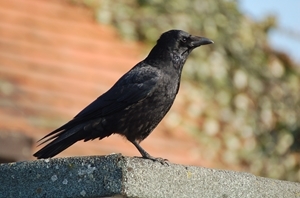 The UK has the second highest average density of foxes in Europe, after Italy. Within UK countries, England has the highest density, followed closely by Wales; Northern Ireland is much lower, and Scotland slightly lower still. There are thought to be on average around 1.75 foxes per square kilometre in the UK. There are several possible weaknesses with analyses of this type. Estimating fox density accurately is always difficult, and the methods used in different countries may not be comparable with each other.
The UK has the second highest average density of foxes in Europe, after Italy. Within UK countries, England has the highest density, followed closely by Wales; Northern Ireland is much lower, and Scotland slightly lower still. There are thought to be on average around 1.75 foxes per square kilometre in the UK. There are several possible weaknesses with analyses of this type. Estimating fox density accurately is always difficult, and the methods used in different countries may not be comparable with each other.
The density of crows in the UK is higher than any other European country, with more than five pairs per square kilometre. The density of magpies found (2.45 pairs per km2) was moderate compared to other European countries.
Have predator numbers increased in the UK?
This analysis is divided into bird predators and mammalian predators.
Avian predators
Of 16 predatory bird species that were studied, eight had increased in the UK between 1995 and 2015. These are: red kite, common buzzard, barn owl, great spotted woodpecker, jay, jackdaw, carrion crow and raven, all of which were considered to have the potential to limit their bird prey species. Of the other eight species, four were stable (peregrine falcon, hobby, magpie and hooded crow) and four had declined (sparrowhawk, kestrel, little owl and tawny owl).
Mammalian predators
Between 1961 and 2009, data from the GWCT’s National Gamebag Census suggests that half of the mammalian predators studied have also increased, being fox, stoat, American mink and grey squirrel. Hedgehog, feral cat and weasel populations have decreased in the same time period, and polecat populations have not changed significantly. However, data from the BTO’s Breeding Bird Survey, which also surveys mammals, suggests that grey squirrel and fox declined between 1996 and 2015.
Are the populations of individual bird species suppressed by predation in the UK, and if so, by which species, and at which stage in their life cycle?
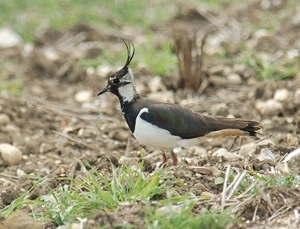 81 studies, containing 908 “cases” of whether an individual species was limited by predation were included, which covered 90 bird prey species. Each case was scored for its scientific quality, and its findings were categorised into whether an effect was found, and whether that was a positive or negative effect of predators on prey.
81 studies, containing 908 “cases” of whether an individual species was limited by predation were included, which covered 90 bird prey species. Each case was scored for its scientific quality, and its findings were categorised into whether an effect was found, and whether that was a positive or negative effect of predators on prey.
The effect of predation on prey populations was very different between different bird groups. There was strong evidence that seabirds, waders and gamebird populations were limited by predation. However, there was little evidence that pigeons, woodpeckers or songbirds were limited by predation.
Some studies looked at the effect on prey populations of removing predators. Of these, the majority looking at the effect on gamebirds and seabirds found that populations rose when predators were removed. However, the number of both waders and songbirds also rose when predators were removed in around 40% of cases. This is an important finding, because it is often stated that predator removal does not benefit songbirds.
| |
|
Change in prey population
size after predator removal |
|
|
|
|
| |
|
|
|
|
|
|
| Prey group |
|
Increase |
No change |
|
Total |
|
% cases
with increase |
|
| Seabirds |
|
4 |
1 |
|
5 |
|
80.00 |
| Gamebirds |
|
9 |
2 |
|
11 |
|
81.33 |
| Raptors and owls |
|
1 |
2 |
|
3 |
|
33.33 |
| Waders |
|
13 |
16 |
|
29 |
|
44.83 |
| Passerines |
|
8 |
12 |
|
20 |
|
40.00 |
|
| Total |
|
35 |
33 |
|
68 |
|
51.47 |
Are there shared characteristics that these species have that may make them particularly vulnerable to predation?
Characteristics shared by the groups most likely to be limited by predation were:
- Long-lived
- High adult survival
- Begin breeding later in life
- Lay a single clutch per year
- Ground-nesting
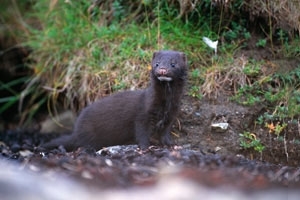 The authors went on to consider which predator species were responsible, and at which point in the life cycle of the prey. This study shows that when predator management is performed, that which is aimed at both foxes and corvids together is more likely to protect prey species than either alone.
The authors went on to consider which predator species were responsible, and at which point in the life cycle of the prey. This study shows that when predator management is performed, that which is aimed at both foxes and corvids together is more likely to protect prey species than either alone.
In more than 60% of studies looking at native predators (fox, weasel, stoat, pine marten and badger) this group limited prey populations. Most of these studies included the fox, either alone or as part of the group.
Of the non-native mammals, American mink, hedgehog (in the Hebrides, where it is introduced) and brown rat were frequently found to limit prey populations (more than two thirds of the studies).
Raptors were found to limit their prey populations in 10% of studies, which was most often due to hen harriers or peregrines.
Corvids alone were found to limit prey populations in 14% of studies, mostly due to hooded and carrion crows.
The paper reports that predation that occurred throughout the life cycle – meaning that eggs, chicks and adults are all eaten by predators – is more likely to influence the prey population than predation that is focused on only one stage – for example, just the eggs. Foxes, corvids and non-native mammals were the main species responsible for predating across all life stages.
What does this mean?
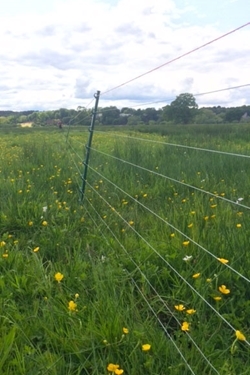 The authors find high fox and crow numbers in the UK compared to other areas of Europe, as well as historical comparisons, and suggest that this is due to several factors: landscapes in which they can thrive, a lack of higher predators that would prey on them, and more human-associated food sources such as waste and released gamebirds.
The authors find high fox and crow numbers in the UK compared to other areas of Europe, as well as historical comparisons, and suggest that this is due to several factors: landscapes in which they can thrive, a lack of higher predators that would prey on them, and more human-associated food sources such as waste and released gamebirds.
Although predation appears to be the immediate factor limiting some bird populations, it is important to think about the wider context: why can predation have such an impact? The real issues behind many wildlife declines are thought to include habitat loss, the breakup of suitable areas of habitat so that they are isolated, and changes in agricultural methods.
Finding out what these underlying causes are and addressing them is the key to reducing the impact of predation in the longer term. In the short term, methods that reduce predation locally can have an important role to protect vulnerable birds. The authors discuss that these could include: lethal control, fencing, diversionary feeding, and reducing the food supply of gamebird carcasses to scavenging predators.
In the long term the answer may lie in considering land-use changes to make the whole landscape less predator-friendly; for example, managing livestock grazing to create suitable areas for lapwing to breed, away from areas that foxes use to hunt. Creating areas of denser vegetation along field margins would allow prey more escape areas in which to hide from predators. Reducing forestry plantations on peat bogs and near wet grasslands in the lowlands could reduce the cover available for predators near wader breeding areas.
Read the original paper
Roos S, Smart J, Gibbons DW and Wilson JD. (2018) A review of predation as a limiting factor for bird populations in mesopredator-rich landscapes: a case study of the UK. Biological Reviews. Blackwell Publishing Ltd.
Help us create a thriving countryside rich in game and other wildlife
What do we do?
- We use science to promote game and wildlife management as an essential part of nature conservation.
- We develop scientifically researched game and wildlife management techniques.
- We promote our work to conservationists, including farmers and landowners and offer an on-site advisory service on all aspects of game and wildlife management, so that Britain’s countryside and its wildlife are enhanced for the public benefit.
- We influence government policy with sound science that creates progressive and effective policies.
- We support best practice for field sports that contribute to improving the biodiversity of the countryside.
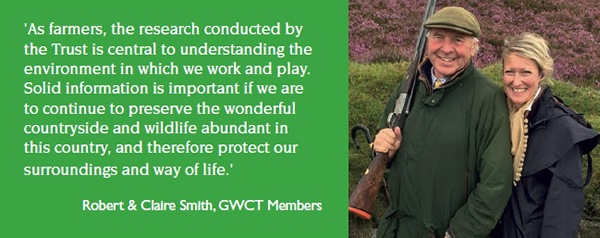
What do we believe?
- Scientific research should underpin sustainable conservation practice.
- Game and wildlife management is the foundation of good conservation.
- Field sports (in particular shooting and fishing) can contribute substantially to the conservation of landscape, habitat and wildlife.
- Humane and targeted predator control is an essential part of effective game and wildlife conservation.
- We utterly oppose those who engage in wildlife crime.
- Good conservation goes hand-in-hand with economic land use.
How your money is spent
- We spent over £5m on vital game and wildlife research and public education in 2017.
Please donate online now >
